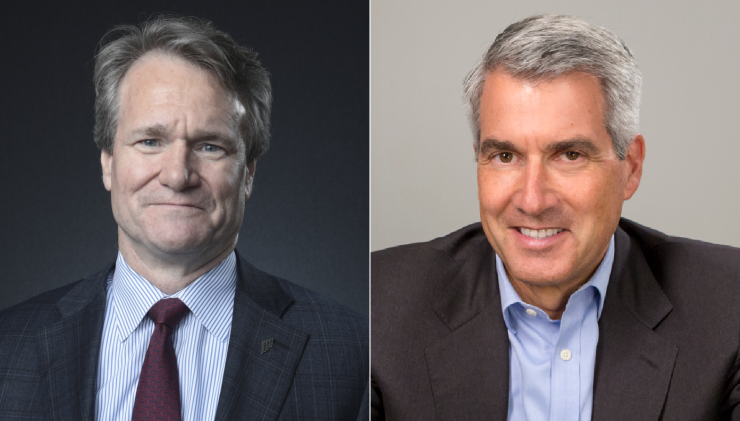Some of the country’s top bankers remain optimistic about consumer finances this year, saying their customers continue to spend without much sign of financial troubles.
Strong consumer spending is poised to further the modest increases in card borrowing they have been seeing, executives predict. They're also displaying little worry that the credit cycle is starting to turn, explaining that they’re only detecting small upticks in loan delinquencies and that they think deterioration will be gradual, not sharp.
“The consumer is in as strong a place as I can remember in decades of doing this,” Capital One Chairman and CEO Richard Fairbank said at a Credit Suisse conference on Thursday.

Officials at the competing credit card issuer Discover feel “really good about the credit picture,” CEO Roger Hochschild told conference attendees. While he expects credit delinquencies to normalize from today’s “artificially low levels,” Hochschild said he expects strong economic growth will help make any worsening in credit quality “relatively gradual.”
“As long as employment remains robust, I think that will be very constructive in terms of normalization,” Hochschild said.
Lenders’ pristine credit quality has benefited from government assistance to consumers and high levels of savings that many accumulated over the pandemic. That has helped them pay off their credit cards instead of carrying balances and, until recently, weighed down credit card lenders’ ability to register loan growth.
That picture started to turn last year, with U.S. credit card balances
Some investors have worried the return of consumer loan growth may be accompanied by a larger deterioration in credit quality.
But credit quality “remained healthy” in January even as it starts to return to more normal levels, RBC Capital Markets analyst Jon Arfstrom wrote in a note to clients this week. Among the six biggest credit card issuers, card delinquencies of 30 days or more stood at 0.85% in January, up slightly from 0.81% in December but significantly below the 1.5% levels in 2019, according to RBC’s analysis.
The outlook for consumer lenders remains favorable this year "given the combination of likely strong consumer spending and very manageable (albeit normalizing) credit,” Arfstrom wrote.
The bank executives spoke during a relatively rocky day in financial markets, where investor jitters over tensions in Ukraine and concerns about inflation helped the S&P 500 index slide 2.12% to 4,380.26. Banks’ stock prices saw a slightly larger decline, with the KBW Nasdaq Bank Index slumping 3.65% to 137.79.
Lenders’ comments at the conference, however, broadly reflected a sense of optimism.
“Every single portfolio is thriving,” said Jennifer LaClair, the chief financial officer at Detroit-based Ally Financial.
Ally, which was spun off from General Motors in 2006, has been a
Although credit “normalization is occurring,” LaClair said the company’s delinquency rates are 30% below pre-pandemic levels.
“We are seeing those start to tick up and start to normalize, and we would expect them to normalize,” LaClair said. “But we're off such a low base, and we're still seeing really strong consumer balance sheets.”
At Wells Fargo, executives are constantly looking for any “cracks that start to emerge,” said CFO Michael Santomassimo. But so far, loans across the bank’s consumer and commercial portfolios are continuing to “perform really well,” Santomassimo said.
He also expressed optimism about the economic environment, saying customers continue to have high levels of liquidity, that job growth remains strong and that “people are out spending and living their lives.”
There are positive signs among Bank of America’s clientele as well, according to CEO Brian Moynihan.
Customer spending in January was “very strong” and the momentum is continuing into February, with spending up 16% so far this month, he said. Notably, child care spending in January returned to pre-pandemic levels, which means more people are starting to be able to go back to work, he said.
At the same time, balances in deposit accounts that had been expected to shrink once federal stimulus ended nearly a year ago have kept growing, Moynihan said. The current combined balances of accounts that had $5,000 or less in them before the pandemic are two to eight times higher than they were two years ago, he said.
The expectation was that those accounts would be “drained” after the payments stopped, Moynihan said. But “they actually keep going up … they’re up like 30%, 40%” from February 2021 to now, he said.
Card paydown rates are starting to slow, but people are using cards to pay for longer-term expenditures.
“So that all bodes well,” Moynihan said.





